Broccoli is one of our family’s favorite vegetables. It is a must in my pantry stocking garden. But growing a broccoli head might be a real challenge for some gardeners. Broccoli plants get easily eaten by pests like cabbage moths, caterpillars, and slugs. If you are new to growing broccoli heads or broccoli is a challenge you would like to conquer, I invite you to read my article below in which I share how I grow this delicious vegetable in my home garden.
- Start broccoli seeds in early spring about 6-8 weeks before the last frost.
- Sow broccoli seeds in a good quality potting mix about ½ inch deep and water thoroughly.
- Keep the soil moist but not damp. Cover with a humidity dome to speed up the germination process.
- Harden off the seedlings once they have 2 sets of true leaves and an extensive root system.
- Plant broccoli seedlings in a sunny location with 6-8 hours of direct sun.
- Prepare the soil by amending it with organic matter like compost, well-aged animal manure, or worm castings. Mix in perlite or vermiculite for aeration, to improve water retention and lightness. Loosen up the soil if needed using a garden fork or shovel.
- Water broccoli plants with 1 inch of water a week. Mulch around the plant to preserve moisture in the soil.
- Fertilize with a vegetable fertilizer of your choice by following the instructions on the packaging.
- Protect broccoli plants by covering them with garden netting or tulle fabric.
- Inspect your plants regularly for pests. Holes in leaves are an indication that pests are present. Collect pests by hand or spray with soapy water or Bacillus Thuringiensis.
- Harvest broccoli heads when they are of usable size, about the size of the palm of the hand.
- Harvest only the head, and leave the rest of the plant intact, as it can produce side broccoli shoots that look like tiny broccoli heads with long stems. They are edible and can be usually harvested a couple of weeks after the harvest of the main head.
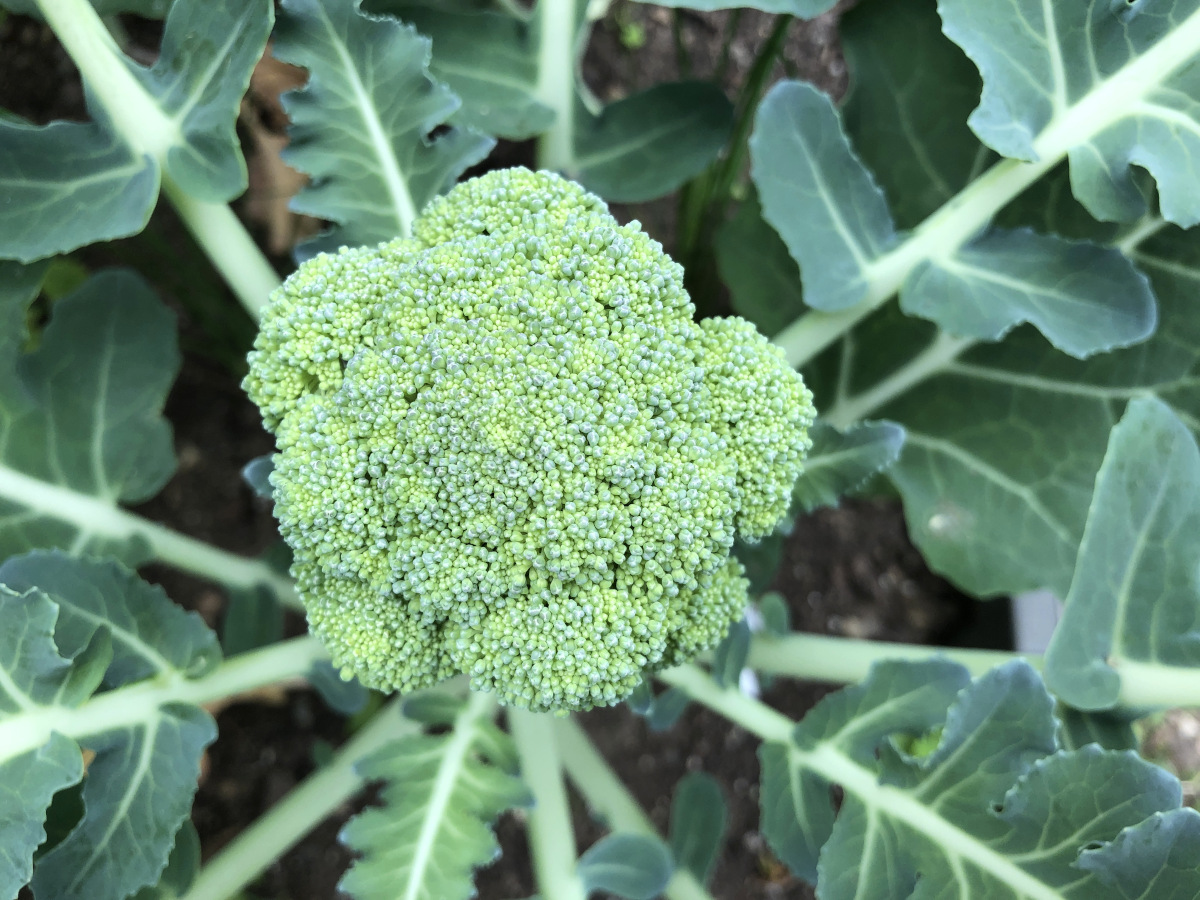
What date do you plant broccoli?
Plant broccoli seeds indoors in early spring from February to April, or 6-8 weeks before the last frost date, for spring harvest. For the fall harvest, sow the seeds in May or June. Broccoli likes cool weather and can handle mild frost, therefore broccoli seedlings be planted outdoors about 2-4 weeks before the last frost date.
Here in zone 6, I start broccoli seeds end of February and aim to plant outdoors in the first week of April. I get to harvest them in the middle or end of June.
A GOOD READ: How to start seeds and care for seedlings
Easy vegetables to start from seed indoors
How to harden off broccoli plants
Always harden off broccoli seedlings before transplanting them outdoors. Start hardening them off by placing them outdoors in a shady area for a couple of hours. Add sun exposure by an hour or two a day. If the leaves appear burned with yellow or brown patches, keep the shade for a day or two to recover and then introduce sunlight slowly again. Hardening off means helping tender seedlings to adjust to the outdoor unprotected environment, especially to direct sunlight.
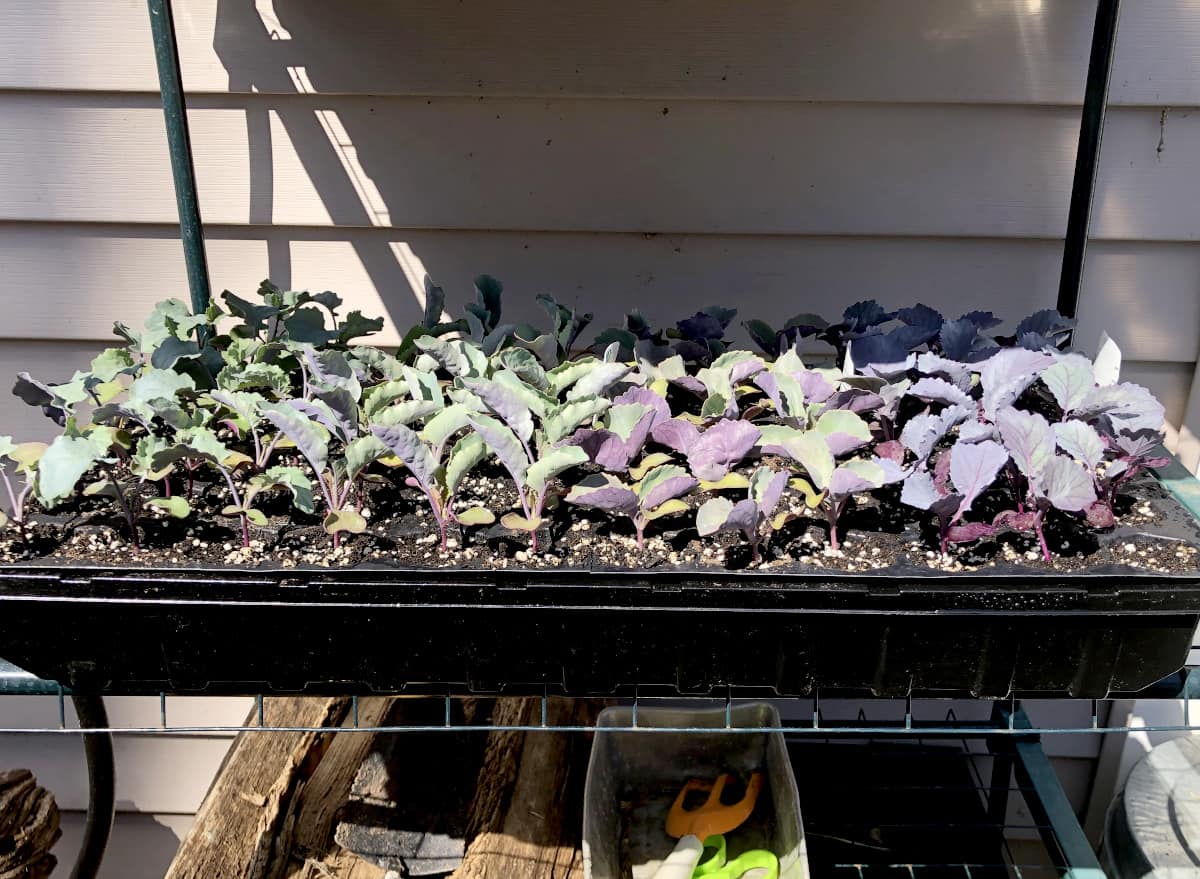
A GOOD READ: How to harden off seedlings
Can you plant broccoli in the fall?
Yes, you can plant broccoli in the fall. For the fall harvest, sow broccoli seeds in May or late June.
How long does broccoli take to grow?
Broccoli takes about 50-90 days from seed to harvest, depending on the cultivar.
Broccoli takes about 4 months to grow from seed to harvest in my garden. I usually add full 30 days to the days the seed packaging suggests regarding the days to harvest.
How many heads of broccoli do you get from one plant?
You get one head from one broccoli plant. However, most broccoli cultivars produce side shoots that look like tiny broccoli heads, just a few weeks after the main broccoli head has been harvested. These can be also harvested and eaten.
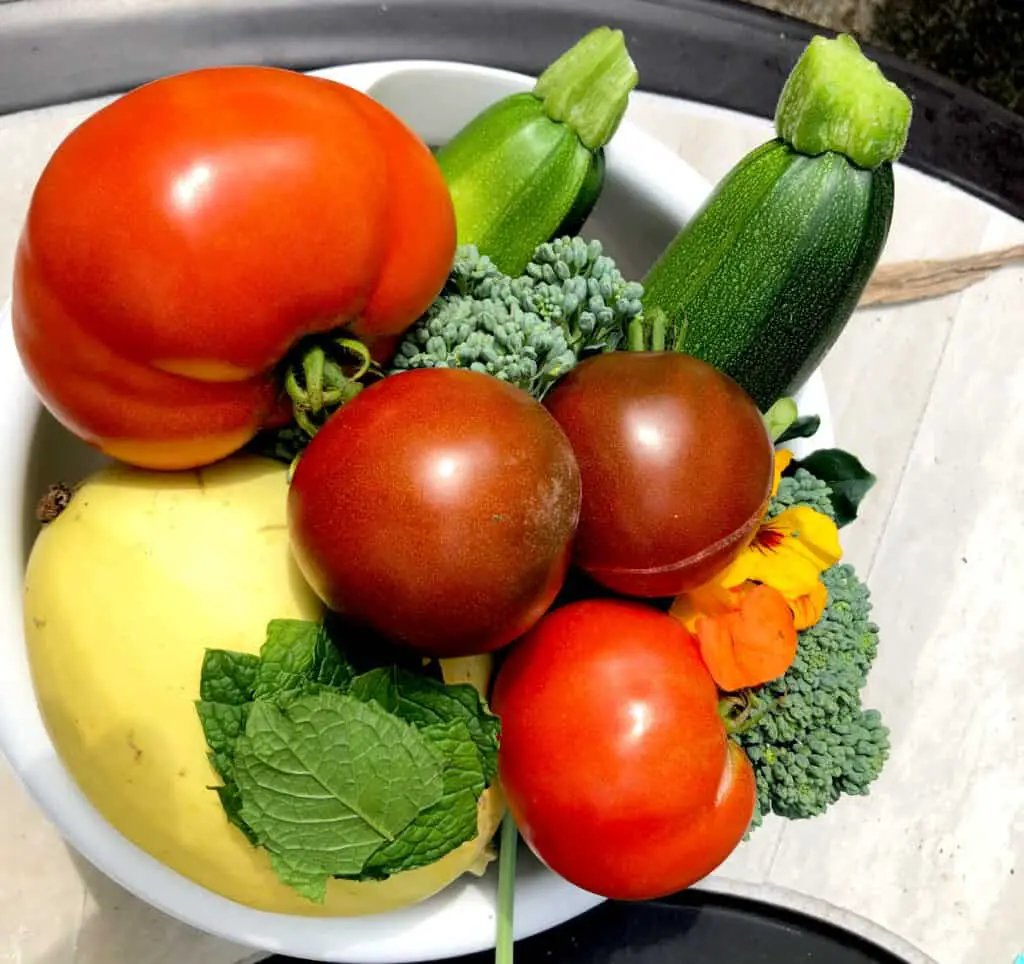
When I first grew broccoli, I had no idea you can get shoots after that! I have never heard of that. I left my plants in the ground after I harvested the main head and to my surprise broccoli shoots came in and I was able to harvest twice or even three times from the same plant. The shoot production is much smaller than the main head, but after such a long time of growing the plant and so much effort put into it, these extra harvests were a great bonus! Better than pulling the whole plant out!
Does broccoli grow back every year?
No, broccoli is an annual vegetable. Annual vegetables, including broccoli, have only one life cycle and after their life cycle is completed, they die down. A new plant needs to be started from the seed.
How often do you water broccoli?
For an in-ground garden or raised bed, water about twice a week. For container garden water daily, as containers dry out faster, especially when the plant is mature and needs more watering. Mulching around the plants helps to preserve moisture in the soil. In general, a vegetable garden needs at least 1-2 inches of water weekly.
A GOOD READ: How and when to water vegetable garden AND How to mulch garden beds
Should you let broccoli flower?
You should let the broccoli plant go to flower, also called bolt, if you would like to collect seeds from the plant. Let the broccoli flower, and let the seed pods form and dry. Then collect the seeds once the pods are completely dry and before they start to open. If you would like to eat the head, do not let it flower.
Does growing broccoli need sun or shade?
Broccoli does best in full sun with about 6-8 hours of direct sunlight.
TIP: My broccoli heads started turning brown by the scorching sun, so I decided to blanch in like I do my cauliflower heads. I simply broke off a large leaf or two from the plant and placed them on top of the heads to shade them. You can also tie broccoli leaves above the broccoli heads to shade them. Tie it loosely for enough airflow.
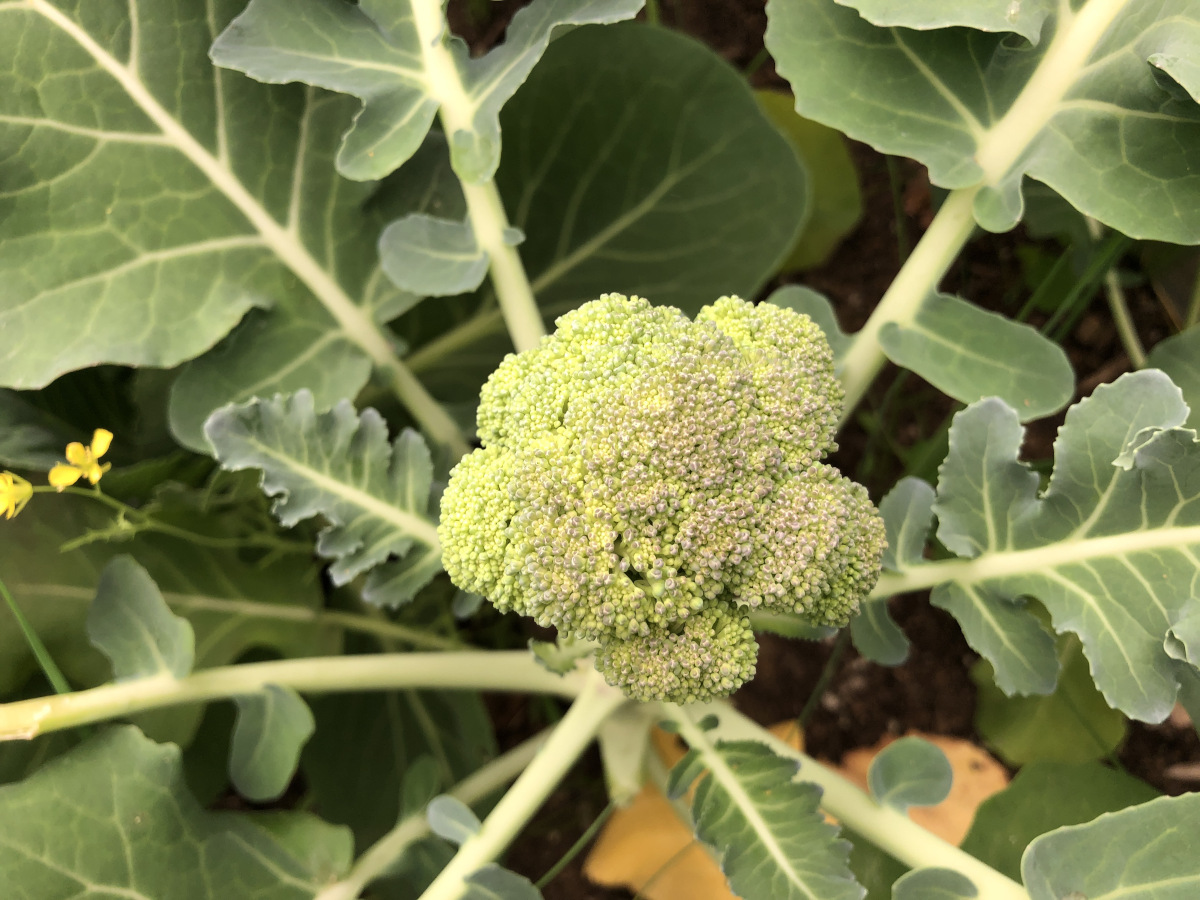
How to fertilize broccoli
Use nitrogen-rich fertilizer. Aged animal manure, fish emulsion, or other vegetable fertilizer either slow-release or liquid can be applied following the instructions on the packaging.
I use this fertilizer for my whole garden, and all plants are doing well thus far. It is a 1-gallon bottle of concentrated liquid fertilizer which I dilute by 10mill in 1 gallon of water, then I water the plants.
What is the best way to protect broccoli?
The best way to protect broccoli from pests is to create a physical barrier they can not cross. Use garden netting to protect the plants from cabbage months, caterpillars, slugs, and other pests. Ensure the netting is secured to the ground or garden bed so nothing can get in from beneath.
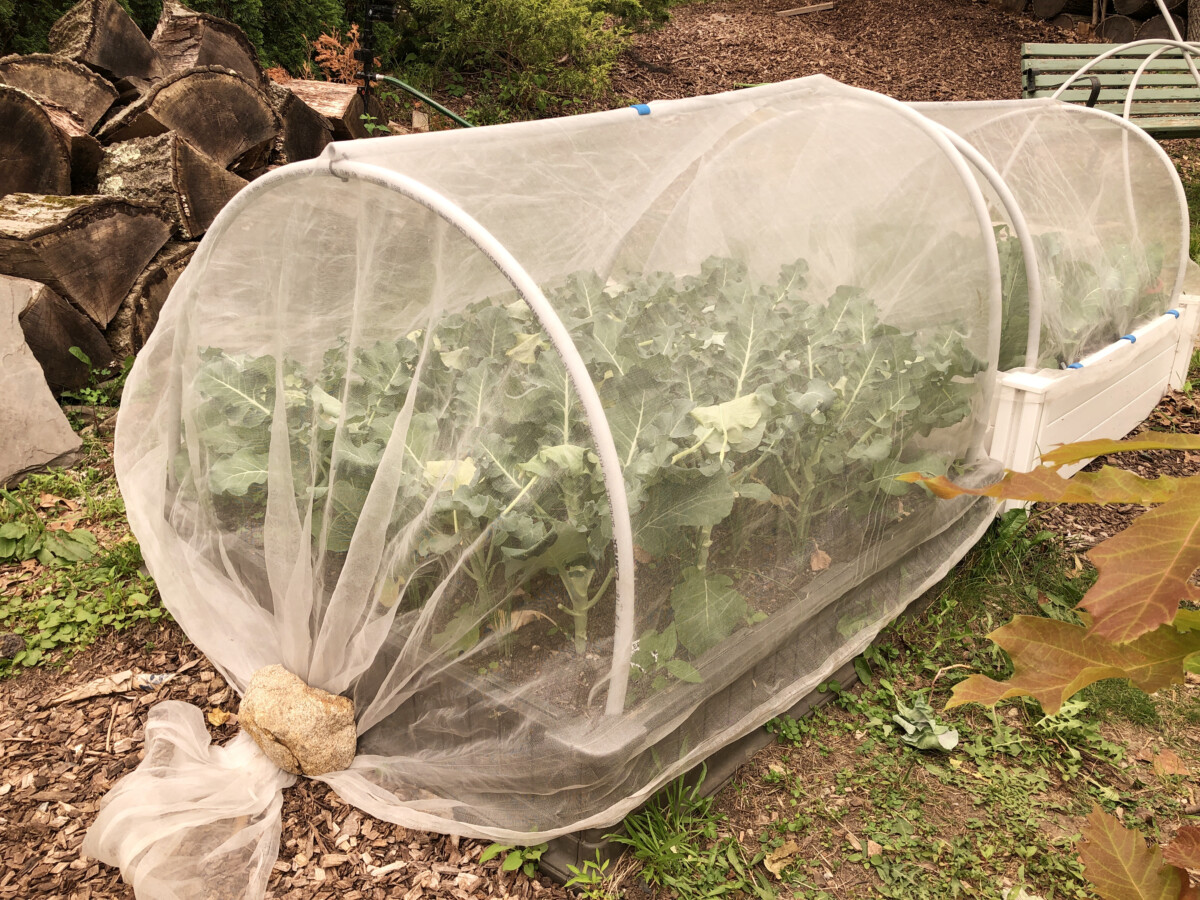
A GOOD READ: How to protect vegetable garden beds
TIP: I use garden netting supported by hoops to protect all my brassicas. Unfortunately, I cannot grow brassicas uncovered like some gardeners can in their area. My area is full of cabbage moths, wild rabbits, and other animals and pests that would be happy to munch on my broccoli. I also ensure the netting is draping down the sides of my raised beds and many times I secure it with clips so nothing can get in from beneath. In past years, I did not secure the sides of the netting, and cabbage moths found their way in and ruined everything. Now I ensure the netting is covering even the sides of the raised beds and is secured by clips or garden staple stakes.
I still inspect my plants almost daily as I walk by enjoying the views of my garden. Once I see holes in the leaves, I inspect the plant closely and remove any pests by hand. Then I dust everything with Azomite soft rock dust because that’s what I have. I also mix Azomite in my soil to add minerals. Other gardeners recommend dish soap mixed with water about 5 tablespoons for a gallon of water and spray the plant. Others like to use Bacillus Thuringiensis to eliminate cabbage moths caterpillars. I prefer to protect with the netting so I do not even have to spray anything. Once pests get in, it is next to impossible to save the plant.
When to harvest broccoli heads
Harvest when the broccoli head is of a usable size to you. The head should be about the size of the palm of a hand and buds tight. Harvest by cutting off the stem about an inch or two under the broccoli head. You can leave the rest of the plant intact to harvest additional side shoots that should be ready in a week or two.
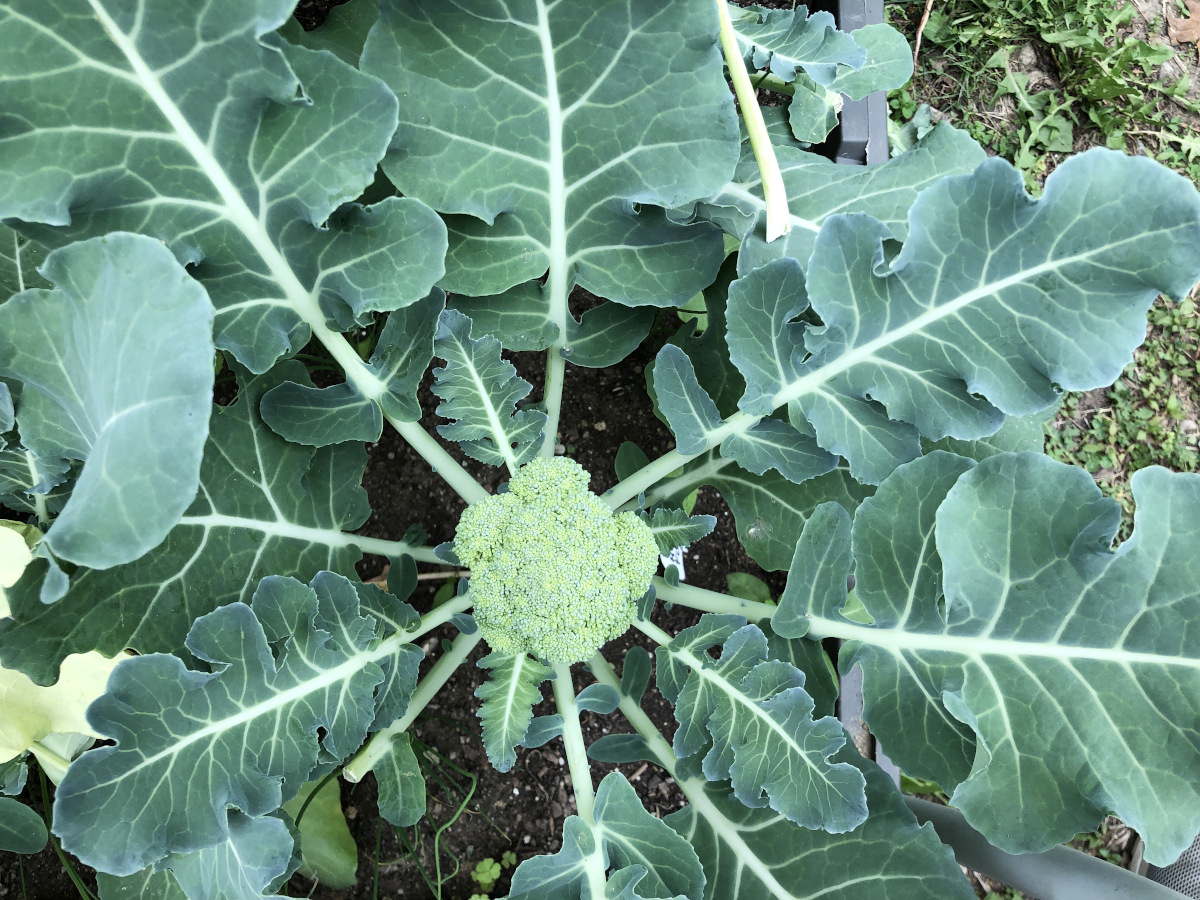
What is bolting in broccoli
Bolting in broccoli means that the broccoli head is flowering and will produce seeds afterward. Broccoli plant bolts in too warm weather. Broccoli is a cool-weather plant and grows best when the temperatures are between 65-75F. It bolts when the temperatures are high for prolonged periods. It is not possible to stop broccoli from bolting in warm weather. The best is to prevent broccoli from bolting by planting it when the weather temperatures are cooler.
TIP: There are some broccoli cultivars that were cultivated especially for warm weather. Some of the heat-tolerant broccoli cultivars are ‘Imperial’, and ‘Green Magic’. However, no broccoli plant does well in extreme heat and/or humidity, especially when the temperatures are above 95F for more than 4 days.
In conclusion, for some, broccoli is easy to grow, and some struggle with it. For me, it was a learning curve, especially when it comes to protecting it from pests. Once you get the soil amended with organic matter, start early in spring, and protect it right, you will have success. Do not forget to fertilize, to encourage the growth of large heads.
Let me know what group you belong to. Do you struggle to grow broccoli, did you learn it till you got it right, or is it a struggle that is yet to be conquered?

